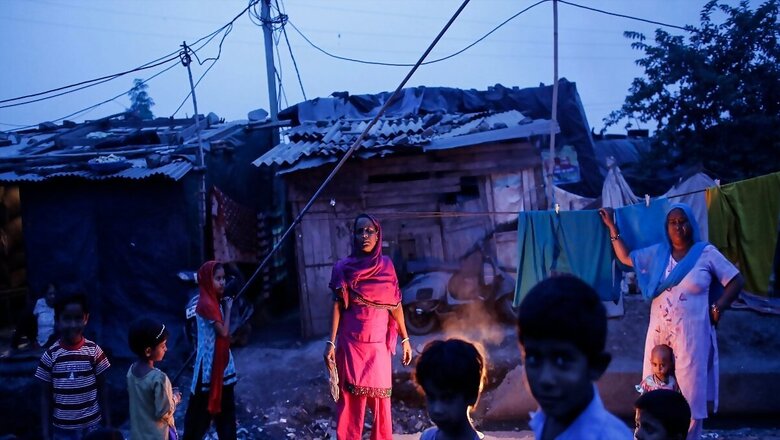
views
The Orientalism eloquently articulated by Edward Said in his works is something that is rapidly being challenged in the Indian context, and the rest of the world is listening. Repartees to commentary that undermines the common citizen of India in order to bat for a West-adjacent elite have become commonplace in international relations, and realpolitik is rarely covered under heaps of euphemism. This cuts across discussions on intelligence, defence, interference in India’s internal affairs and the like. The economic front, though, may be the last bastion where the oriental gaze of the West is likely to be challenged by a mere academic defence.
The problem is not that gentlemanly responses are unbecoming; rather, it is that political vendetta cannot be parried by the academic articulation of facts. After all, the offender is rarely uneducated in data analysis, but has a vested interest in misrepresenting it, often through outright lies.
Take, for example, Ashoka Mody’s article rebutting the data of India’s poverty being reduced at almost three times the rate at which the last decline happened. Apparently, that is not a matter to be discussed over numbers, a matter he most delicately defines with “the numbers stink.” Instead, the Indian government’s calculation of 2023 GDP using global standards is somehow tied to the 2011 Census to specify through tonality, not data, that both are inaccurate. After all, if a similar approach is used to tie a few less disparate facts together such as the matter of Project Syndicate publishing Mody’s paper also continuously publishing the Soros father-son duo periodically, one may see why the vehement denial of India’s all too visible economic growth must be so disingenuously misrepresented.
The publication offers a global far-Left platform to India’s political Opposition, by publishing Shashi Tharoor instead of any of India’s actually significant politicians, alongside fearmongering articles en masse by openly Indiaphobic commentators whose storied legacies are built on decrying the nation. An arm of the Open Society’s many tentacles can hardly be expected to be objective in its analysis. Nonetheless, the malice brought forth in this particular piece by Ashoka Mody makes the rapid eradication of poverty in India seem like a personal blow to its author.
“In analyzing the recently released consumption-expenditure data, Bhalla and Bhasin seem to have converted the $1.90 threshold into rupees at the IMF-reported PPP rate of 22.9 rupees per dollar. Consequently, their analysis categorizes people as poor only if they cannot spend 45 rupees a day,” he writes. This is an easily spotted inaccuracy in data representation since the methodology of using the World Bank’s $1.90 poverty line of per capita per month consumption of Rs 1454 in rural areas and Rs 1750 in urban areas instead of the IMF-reported PPP method has already been published by Surjit Bhalla and Karan Bhasin. Yet, for those who seek validation in an anti-India story and come without a harder look at facts that may belie their beliefs, this article provides a masterclass in misrepresentation.
This false data is the point on which the title of the article hinges – it states that the calculation is akin to wishing away poverty. Instead, his miscalculation wishes away the multidimensional upliftment of millions of Indians who now have access to electricity, running tap water, gas cylinders, a public distribution system without leakage and direct cash transfers from a welfarist government focusing on digital infrastructure to bypass once-entrenched corruption.
A point about inflation inequality with much blame on the current government for not providing the exact numbers that would disprove the government’s own calculations is also made. At the same time, subsidies that address the very same inequality for the large bottom percentile of the population and include some of the welfarist benefits mentioned above are simply disregarded. Essentially, the ask of this article is for the Indian government to showcase data that proves the opposite of reality to validate the views of those benefitted by a downturn in India, and reflects no concern for those actually suffering poverty, marking them as fair game for motivated commentary.
Sophistry cannot hope to change the fact that it is these masses that are most affected by the change on the ground. It is the same bottom percentile who have voted the sitting Indian government back to power with its largest mandate yet, in 2019, and looks set to do the same this year.
There are further bits of partial data thrown in for the specific purpose of obfuscation – the citation of “out-of-pocket medical expenses” ignores the implementation of the PM Jan Arogya Yojana, an insurance scheme offered by the national government. Similarly, the millions of new bank accounts, access to education, information and employment via heavy penetration of telecom infrastructure, and immense improvement in mobility, even in regions completely ignored until 2014 via a massive network of railway lines, is disappeared by assumptive analysis centred around talking points parroted by India’s political Opposition over the years, and not behoving an economist making a good faith argument to re-examine data that would help estimate and thus act on India’s levels of poverty.
More, a maleficent explanation of inequality that paints every Indian businessman as an example of towering inequality while writing for an American capitalist known to extoll austerity for the masses and luxury for the elites is staggeringly incoherent. Yet, the hypocrisy has come to be expected as India strides towards its goal of becoming a developed nation by 2047, instead of catering to the gaze of the Westerner benevolently helping a Slumdog Millionaire achieve their dreams as the slums and the people forced to live within them offer a background for photogenic benevolence. A faraway economist may choose to find poverty in an economy rising on its own terms, while its population can choose to discard povertarianism. After all, American elites rarely bear the consequences of their incorrect metrics; it is the want of the weary Indian to bear with global ratings and calculations based on their commentary.
Sagorika Sinha is a columnist at several Indian publications such as NDTV, FirstPost and CNN-News18 and also hosts a podcast on geopolitics and culture. She writes about international relations, public policy and history, and posts on X on her handle @sagorika_s. Views expressed in the above piece are personal and solely that of the author. They do not necessarily reflect News18’s views.
















Comments
0 comment